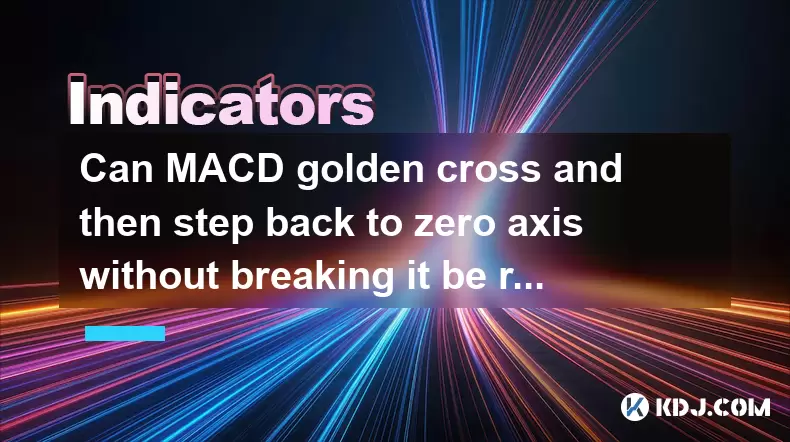-
 Bitcoin
Bitcoin $118,698.3676
0.16% -
 Ethereum
Ethereum $3,428.4877
5.97% -
 XRP
XRP $3.2496
9.52% -
 Tether USDt
Tether USDt $1.0002
0.00% -
 BNB
BNB $725.6930
4.36% -
 Solana
Solana $174.8923
4.52% -
 USDC
USDC $0.9997
-0.02% -
 Dogecoin
Dogecoin $0.2139
6.02% -
 TRON
TRON $0.3155
4.62% -
 Cardano
Cardano $0.8045
7.12% -
 Hyperliquid
Hyperliquid $46.6582
-1.72% -
 Stellar
Stellar $0.4676
0.80% -
 Sui
Sui $4.0143
0.38% -
 Chainlink
Chainlink $17.1546
2.97% -
 Hedera
Hedera $0.2458
3.27% -
 Bitcoin Cash
Bitcoin Cash $496.5967
-0.06% -
 Avalanche
Avalanche $22.8813
3.13% -
 Shiba Inu
Shiba Inu $0.0...01439
3.42% -
 UNUS SED LEO
UNUS SED LEO $8.8389
0.42% -
 Toncoin
Toncoin $3.2113
2.82% -
 Litecoin
Litecoin $101.2646
4.24% -
 Polkadot
Polkadot $4.2262
2.32% -
 Monero
Monero $340.4295
2.92% -
 Pepe
Pepe $0.0...01365
2.92% -
 Uniswap
Uniswap $8.9702
-2.78% -
 Bitget Token
Bitget Token $4.7675
2.00% -
 Dai
Dai $0.9998
-0.02% -
 Ethena USDe
Ethena USDe $1.0003
-0.04% -
 Aave
Aave $324.6394
-2.11% -
 Bittensor
Bittensor $433.6051
-0.88%
Can MACD golden cross and then step back to zero axis without breaking it be regarded as a buying point?
A MACD golden cross followed by a pullback to the zero line without breaking it can signal a strong bullish continuation in crypto trends.
Jul 14, 2025 at 12:00 am

Understanding the MACD Golden Cross in Cryptocurrency Trading
The Moving Average Convergence Divergence (MACD) is one of the most widely used technical indicators among cryptocurrency traders. A golden cross occurs when the MACD line crosses above the signal line, typically signaling a potential bullish trend. This event often prompts traders to look for entry points into long positions. However, a nuanced scenario arises when the MACD golden cross is followed by a pullback to the zero axis without breaking below it.
This situation raises several questions: Is this still a valid buying opportunity? Does the bounce off the zero line reinforce support and validate the initial golden cross? These are critical inquiries that traders must address with precision before making investment decisions.
The Significance of the Zero Axis in MACD Analysis
The zero axis on the MACD histogram plays a pivotal role in interpreting momentum shifts. When the MACD line moves above zero, it indicates that the short-term moving average has surpassed the long-term moving average, suggesting positive momentum. Conversely, a move below zero signals bearish pressure.
In the context of a golden cross, if the MACD line retreats toward the zero axis but does not break below it, this may indicate underlying strength in the bullish trend. The zero line acts as a dynamic support level. If price action respects this level and the MACD line bounces upward again, it can be interpreted as a continuation pattern rather than a reversal.
How to Identify a Valid Pullback Without a Zero Line Break
To determine whether such a scenario constitutes a reliable buying point, traders should follow these steps:
- Confirm the Initial Golden Cross: Ensure that the MACD line has clearly crossed above the signal line and that this occurred above the zero axis or shortly before reaching it.
- Observe the Retracement Pattern: Watch how the MACD line pulls back after the golden cross. It should approach the zero line but not close significantly below it.
- Monitor Volume and Price Action: During the retracement phase, check if volume remains low or if the price holds key support levels, which can confirm the strength of the ongoing uptrend.
- Look for Reversal Candles or Momentum Indicators: Use candlestick patterns or other momentum oscillators like RSI or Stochastic to confirm that selling pressure is exhausted.
If all these conditions align, the pullback to the zero axis without breaking it could serve as a second entry window following the initial golden cross.
Case Studies in Cryptocurrency Markets
Examining historical data from major cryptocurrencies like Bitcoin (BTC) or Ethereum (ETH) can provide practical insights. For example, during certain bull runs, BTC experienced multiple golden crosses where the MACD line pulled back to the zero line but did not breach it. In many of these cases, prices resumed their upward trajectory shortly afterward.
One notable instance was in early 2021 when ETH displayed a classic MACD pattern. After a golden cross formed, the MACD line retreated toward zero but stabilized. Shortly after, the price surged over 30% within a few days. Traders who re-entered at the zero-axis bounce benefited from the subsequent rally.
Such examples illustrate that while not every bounce will lead to a strong move, the MACD’s behavior near the zero axis can offer valuable clues about trend sustainability.
Combining MACD with Other Technical Tools for Confirmation
Relying solely on the MACD can be risky. To increase confidence in the setup, consider integrating additional tools:
- Trendlines and Moving Averages: If the price remains above a key moving average (e.g., 50 EMA) during the MACD pullback, it reinforces the bullish bias.
- Volume Profile: Increasing volume on the bounce from the zero line suggests institutional or large-cap trader involvement, supporting the likelihood of a trend continuation.
- Fibonacci Retracements: Use Fibonacci levels to identify potential areas where the price might find support during the pullback phase.
By combining these techniques, traders can filter out false signals and focus on high-probability setups where the MACD golden cross and zero-axis bounce align with broader market structure.
FAQs
Q: Can the MACD zero-axis bounce work in both uptrends and downtrends?
A: While the bounce off the zero line is more commonly observed in uptrends following a golden cross, similar logic can apply in downtrends after a death cross. However, the reliability tends to be higher in strong trending markets.
Q: Should I use tight stop-losses when entering on a zero-axis bounce?
A: Yes, setting a stop-loss just below the recent swing low or slightly under the zero line can help manage risk effectively while allowing room for normal price fluctuations.
Q: How long should I wait for the price to resume its trend after the MACD bounce?
A: There is no fixed time frame, but monitoring for at least two consecutive bullish candles or a breakout above a recent resistance level can provide confirmation that the trend is resuming.
Q: Does this strategy work better on higher time frames like 4-hour or daily charts?
A: Generally, yes. Higher time frames tend to filter out noise and provide more reliable signals. The MACD golden cross and zero-axis bounce are more trustworthy when observed on daily or 4-hour charts compared to lower intervals.
Disclaimer:info@kdj.com
The information provided is not trading advice. kdj.com does not assume any responsibility for any investments made based on the information provided in this article. Cryptocurrencies are highly volatile and it is highly recommended that you invest with caution after thorough research!
If you believe that the content used on this website infringes your copyright, please contact us immediately (info@kdj.com) and we will delete it promptly.
- Silver Breaks 14-Year High: What's Driving the Rally?
- 2025-07-17 22:50:13
- Grok AI, Meme Coins, and Dogecoin: What's the Hype in 2025?
- 2025-07-17 23:10:11
- C2 Blockchain, DOG Coins, and Acquisition: A Meme-Native Bitcoin Asset
- 2025-07-17 20:30:12
- DeFi Evolution: Hyperion, HYPE Token, and the Hyperliquid Ecosystem
- 2025-07-17 21:30:12
- BlockDAG's NO VESTING PASS: A Crypto Game Changer Amid CRO & ONDO Swings
- 2025-07-17 21:30:12
- Ethereum, Pepe, Crypto: Navigating the Wild West of Digital Assets
- 2025-07-17 20:30:12
Related knowledge

Advanced RSI strategies for crypto
Jul 13,2025 at 11:01am
Understanding the Basics of RSI in Cryptocurrency TradingThe Relative Strength Index (RSI) is a momentum oscillator used to measure the speed and chan...

Crypto RSI for day trading
Jul 12,2025 at 11:14am
Understanding RSI in the Context of Cryptocurrency TradingThe Relative Strength Index (RSI) is a momentum oscillator used to measure the speed and cha...

Crypto RSI for scalping
Jul 12,2025 at 11:00pm
Understanding RSI in the Context of Crypto TradingThe Relative Strength Index (RSI) is a momentum oscillator widely used by traders to measure the spe...

What does an RSI of 30 mean in crypto
Jul 15,2025 at 07:07pm
Understanding RSI in Cryptocurrency TradingRelative Strength Index (RSI) is a momentum oscillator widely used in cryptocurrency trading to measure the...

What does an RSI of 70 mean in crypto
Jul 13,2025 at 06:07pm
Understanding the RSI Indicator in Cryptocurrency TradingThe Relative Strength Index (RSI) is a widely used technical analysis tool that helps traders...

Does RSI work in a bear market for crypto
Jul 16,2025 at 01:36pm
Understanding RSI in Cryptocurrency TradingThe Relative Strength Index (RSI) is a momentum oscillator used by traders to measure the speed and change ...

Advanced RSI strategies for crypto
Jul 13,2025 at 11:01am
Understanding the Basics of RSI in Cryptocurrency TradingThe Relative Strength Index (RSI) is a momentum oscillator used to measure the speed and chan...

Crypto RSI for day trading
Jul 12,2025 at 11:14am
Understanding RSI in the Context of Cryptocurrency TradingThe Relative Strength Index (RSI) is a momentum oscillator used to measure the speed and cha...

Crypto RSI for scalping
Jul 12,2025 at 11:00pm
Understanding RSI in the Context of Crypto TradingThe Relative Strength Index (RSI) is a momentum oscillator widely used by traders to measure the spe...

What does an RSI of 30 mean in crypto
Jul 15,2025 at 07:07pm
Understanding RSI in Cryptocurrency TradingRelative Strength Index (RSI) is a momentum oscillator widely used in cryptocurrency trading to measure the...

What does an RSI of 70 mean in crypto
Jul 13,2025 at 06:07pm
Understanding the RSI Indicator in Cryptocurrency TradingThe Relative Strength Index (RSI) is a widely used technical analysis tool that helps traders...

Does RSI work in a bear market for crypto
Jul 16,2025 at 01:36pm
Understanding RSI in Cryptocurrency TradingThe Relative Strength Index (RSI) is a momentum oscillator used by traders to measure the speed and change ...
See all articles

























































































